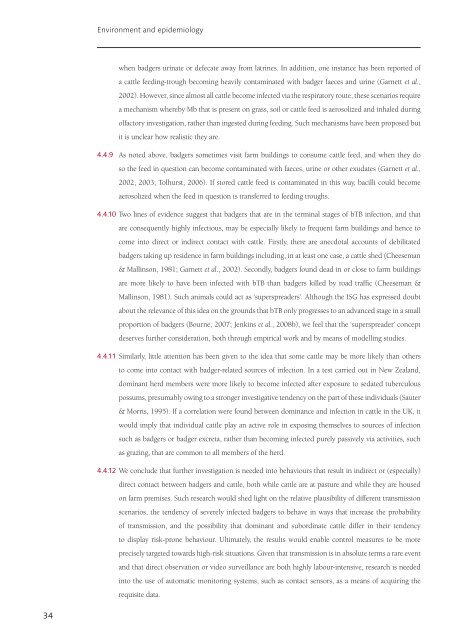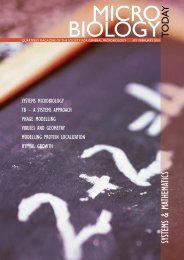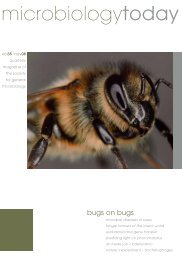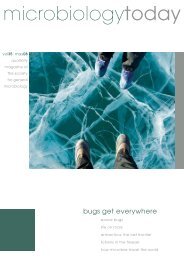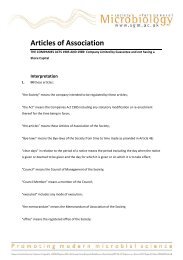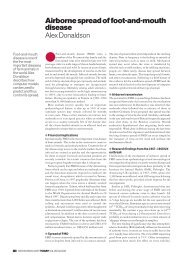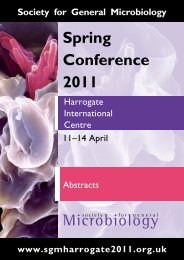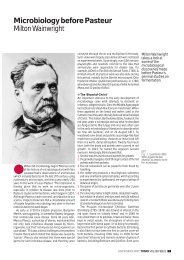final report - ARCHIVE: Defra
final report - ARCHIVE: Defra
final report - ARCHIVE: Defra
Create successful ePaper yourself
Turn your PDF publications into a flip-book with our unique Google optimized e-Paper software.
Environment and epidemiology<br />
when badgers urinate or defecate away from latrines. In addition, one instance has been <strong>report</strong>ed of<br />
a cattle feeding-trough becoming heavily contaminated with badger faeces and urine (Garnett et al.,<br />
2002). However, since almost all cattle become infected via the respiratory route, these scenarios require<br />
a mechanism whereby Mb that is present on grass, soil or cattle feed is aerosolized and inhaled during<br />
olfactory investigation, rather than ingested during feeding. Such mechanisms have been proposed but<br />
it is unclear how realistic they are.<br />
4.4.9 As noted above, badgers sometimes visit farm buildings to consume cattle feed, and when they do<br />
so the feed in question can become contaminated with faeces, urine or other exudates (Garnett et al.,<br />
2002, 2003; Tolhurst, 2006). If stored cattle feed is contaminated in this way, bacilli could become<br />
aerosolized when the feed in question is transferred to feeding troughs.<br />
4.4.10 Two lines of evidence suggest that badgers that are in the terminal stages of bTB infection, and that<br />
are consequently highly infectious, may be especially likely to frequent farm buildings and hence to<br />
come into direct or indirect contact with cattle. Firstly, there are anecdotal accounts of debilitated<br />
badgers taking up residence in farm buildings including, in at least one case, a cattle shed (Cheeseman<br />
& Mallinson, 1981; Garnett et al., 2002). Secondly, badgers found dead in or close to farm buildings<br />
are more likely to have been infected with bTB than badgers killed by road traffic (Cheeseman &<br />
Mallinson, 1981). Such animals could act as ‘superspreaders’. Although the ISG has expressed doubt<br />
about the relevance of this idea on the grounds that bTB only progresses to an advanced stage in a small<br />
proportion of badgers (Bourne, 2007; Jenkins et al., 2008b), we feel that the ‘superspreader’ concept<br />
deserves further consideration, both through empirical work and by means of modelling studies.<br />
4.4.11 Similarly, little attention has been given to the idea that some cattle may be more likely than others<br />
to come into contact with badger-related sources of infection. In a test carried out in New Zealand,<br />
dominant herd members were more likely to become infected after exposure to sedated tuberculous<br />
possums, presumably owing to a stronger investigative tendency on the part of these individuals (Sauter<br />
& Morris, 1995). If a correlation were found between dominance and infection in cattle in the UK, it<br />
would imply that individual cattle play an active role in exposing themselves to sources of infection<br />
such as badgers or badger excreta, rather than becoming infected purely passively via activities, such<br />
as grazing, that are common to all members of the herd.<br />
4.4.12 We conclude that further investigation is needed into behaviours that result in indirect or (especially)<br />
direct contact between badgers and cattle, both while cattle are at pasture and while they are housed<br />
on farm premises. Such research would shed light on the relative plausibility of different transmission<br />
scenarios, the tendency of severely infected badgers to behave in ways that increase the probability<br />
of transmission, and the possibility that dominant and subordinate cattle differ in their tendency<br />
to display risk-prone behaviour. Ultimately, the results would enable control measures to be more<br />
precisely targeted towards high-risk situations. Given that transmission is in absolute terms a rare event<br />
and that direct observation or video surveillance are both highly labour-intensive, research is needed<br />
into the use of automatic monitoring systems, such as contact sensors, as a means of acquiring the<br />
requisite data.<br />
34


